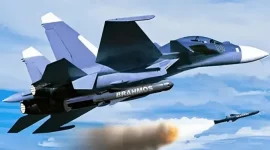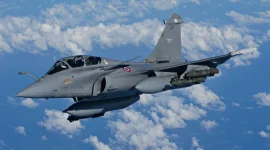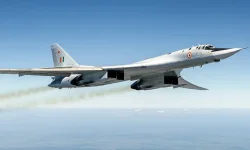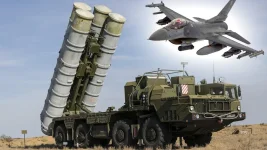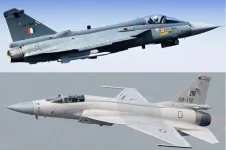- Views: 6K
- Replies: 12
The race to develop advanced fighter jets in South Asia is intensifying, with both Pakistan and India pushing the boundaries of their respective indigenous programs.
The Pakistan Air Force (PAF) is poised to introduce the JF-17 Block 4 under its PF-X (Pakistan Fighter Experimental) program, with a projected debut in 2028. This development raises questions about how India's Tejas Mk2 could have potentially evolved beyond its current 4.5 generation designation.
The JF-17 Block 4 is expected to incorporate several features typically associated with fifth-generation fighter jets:
- Internal Weapons Bay (IWB): Although limited by space, the inclusion of an IWB allows for a cleaner radar signature when flying without external ordnance, potentially enhancing stealth capabilities for initial engagements. However, the limited size restricts the number of Beyond Visual Range Air-to-Air Missiles (BVRAAMs) that can be carried internally.
- Diverterless Supersonic Inlets (DSI): These intakes not only reduce the aircraft's radar cross-section but also potentially improve airflow, which could be beneficial for future engine upgrades aiming for higher thrust.
Furthermore, while the JF-17 Block 4 introduces an IWB, the Tejas Mk2 could have explored semi-recessed belly missile bays. Such a design would reduce drag, improve fuel efficiency, and lower the radar signature, striking a balance between stealth and payload capacity.
The contrasting approaches reflect different design philosophies. The Tejas Mk2 follows an incremental approach, building on existing designs with significant but evolutionary upgrades. The JF-17 Block 4, on the other hand, appears to embrace more radical changes, incorporating features that push it closer to fifth-generation criteria.
Both aircraft aim to enhance survivability in modern air combat scenarios, where stealth plays a critical role. The inclusion of stealth features like IWBs in the JF-17 Block 4 highlights a trend towards reduced detectability, a trend that could have been more aggressively pursued in the Tejas Mk2.
Moreover, designing for future upgrades is essential. The lack of DSI intakes in the Tejas Mk2 might limit its ability to adopt more powerful engines or further reduce its radar cross-section without significant redesign.
As both nations continue to advance their fighter jet programs, the development of the JF-17 Block 4 under the PF-X program demonstrates a willingness to push technological boundaries and strive for a more pronounced generational leap.
While the Tejas Mk2 represents a commendable evolution of the Tejas platform, it may have missed an opportunity to integrate more fifth-generation elements that could have positioned it as a more revolutionary advancement in Indian military aviation.

